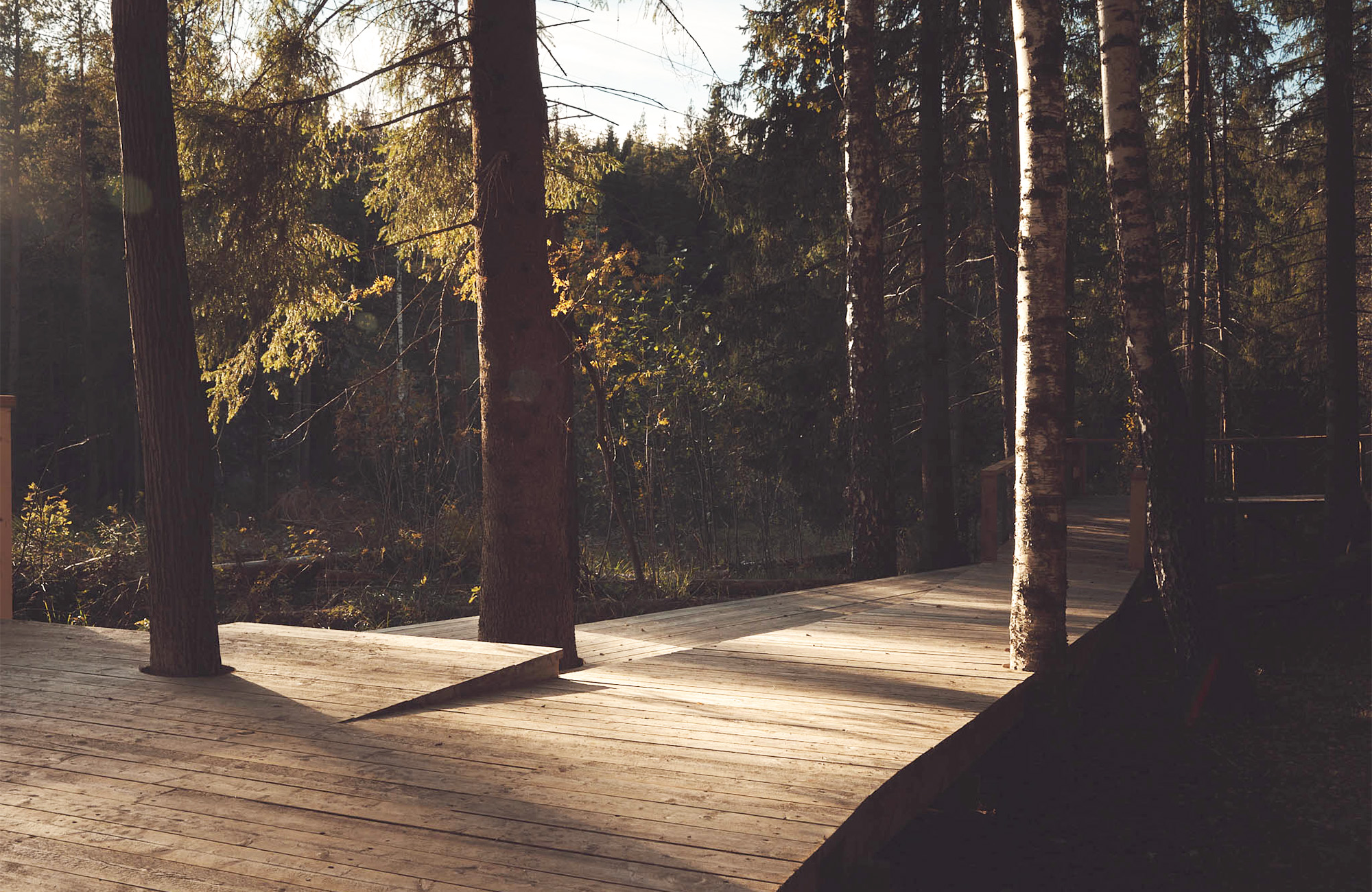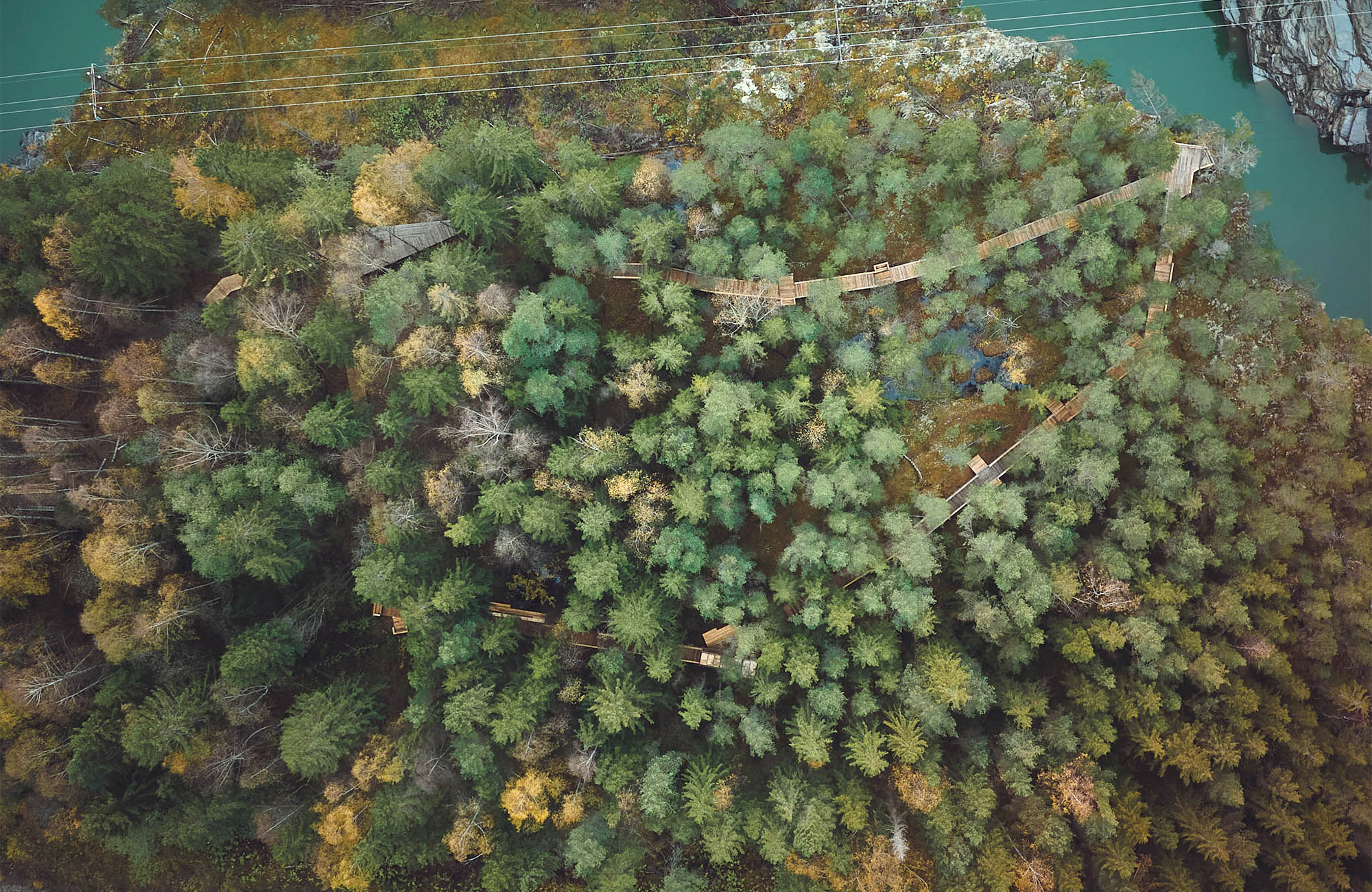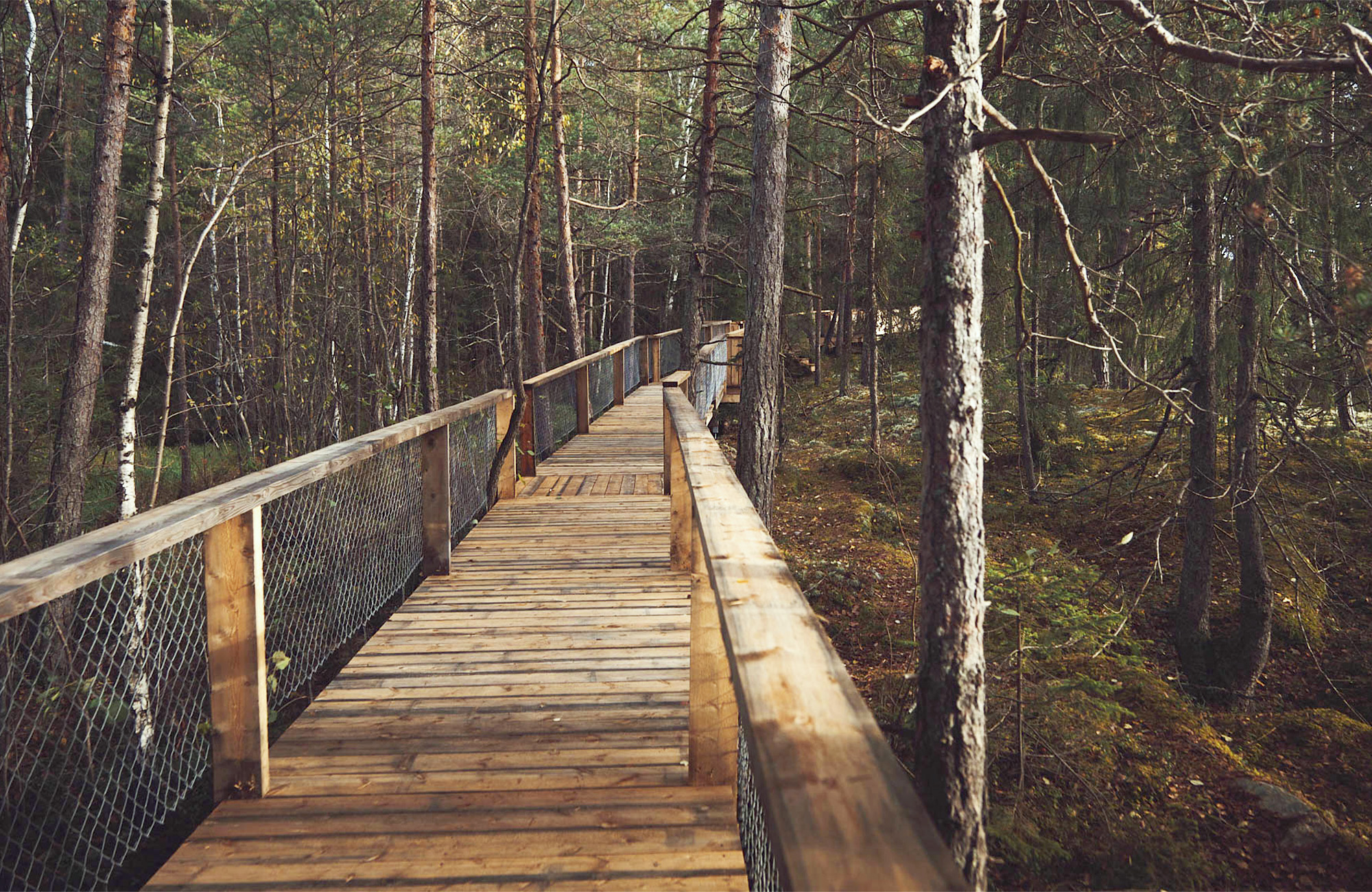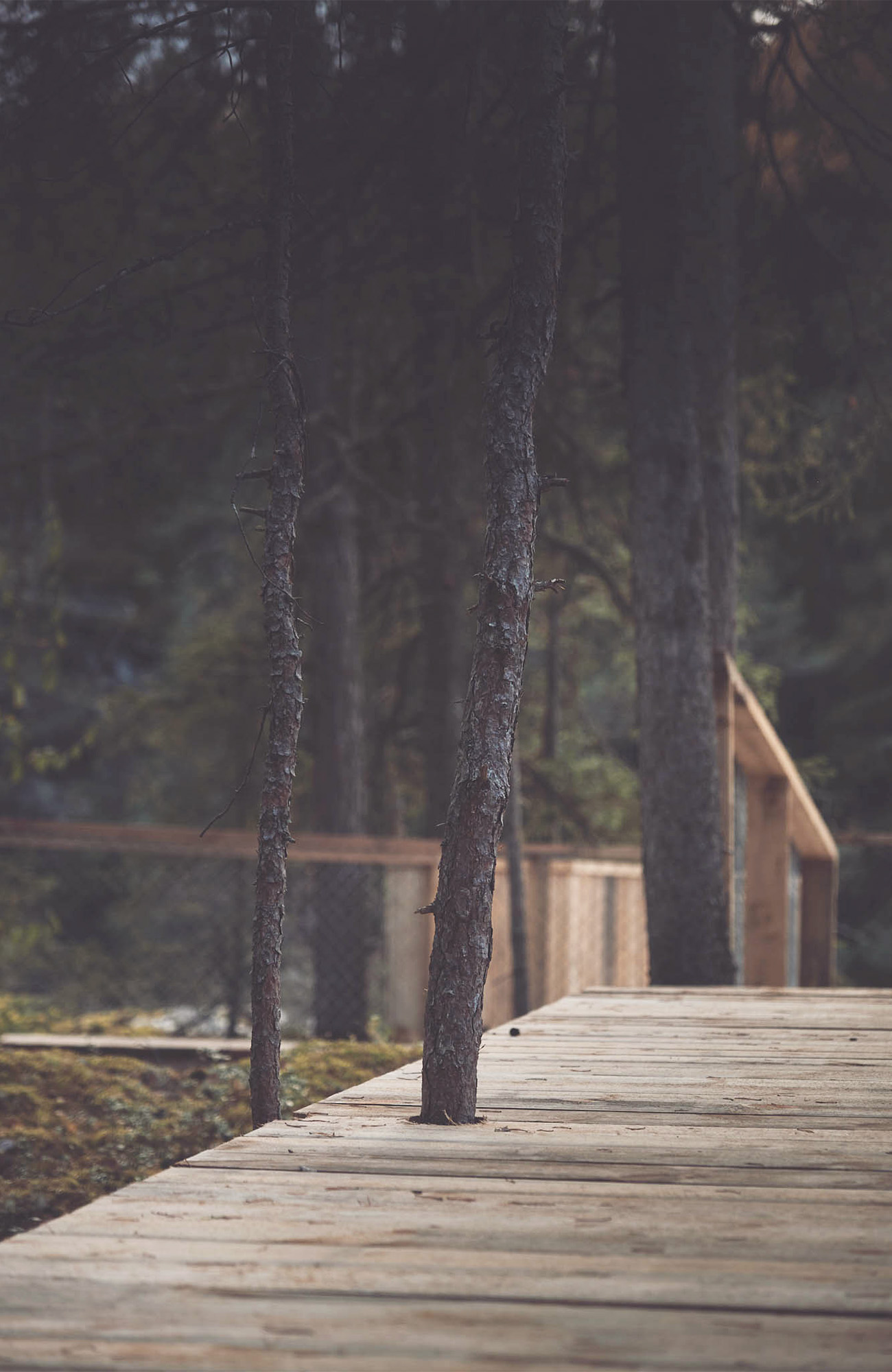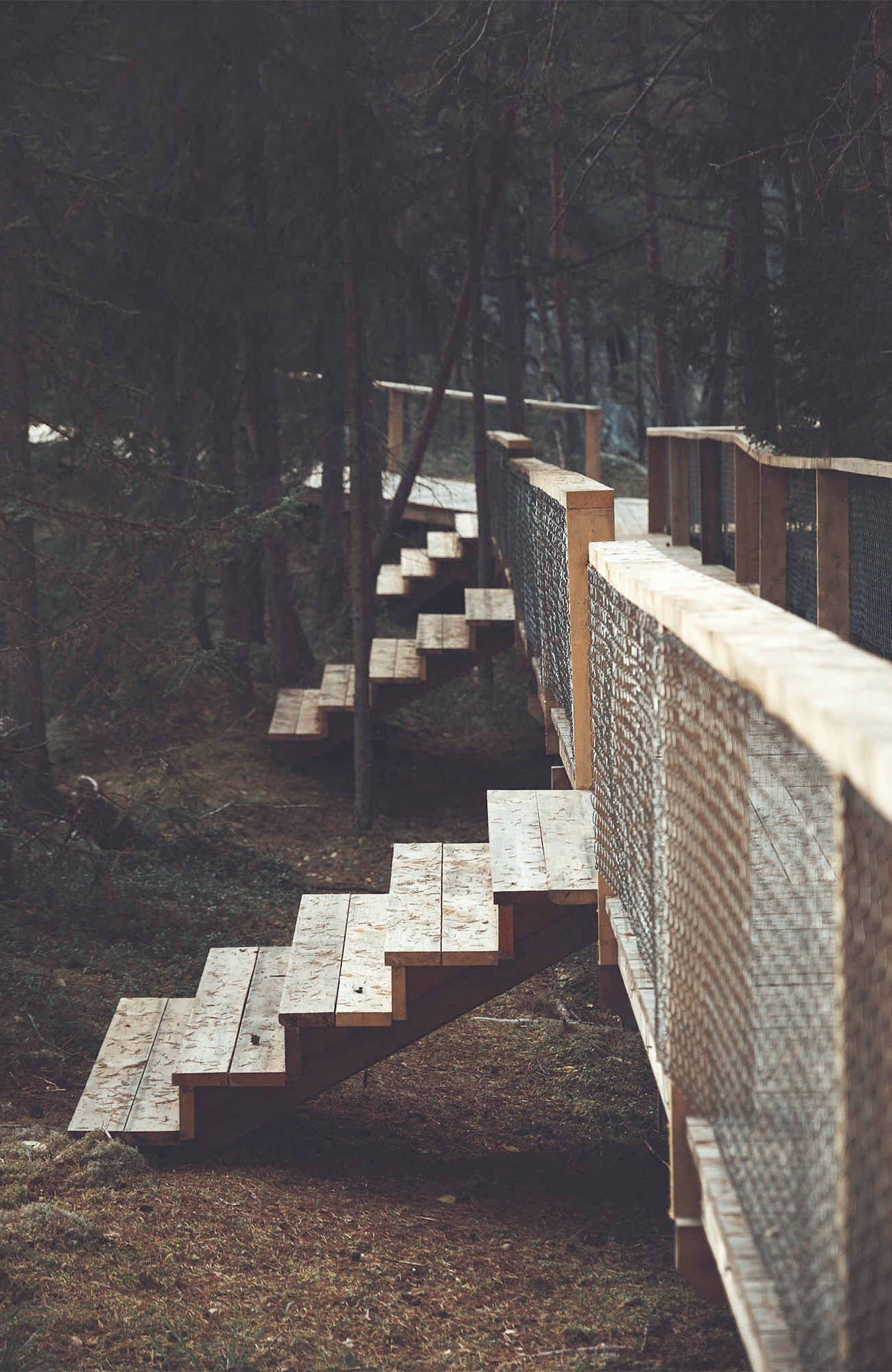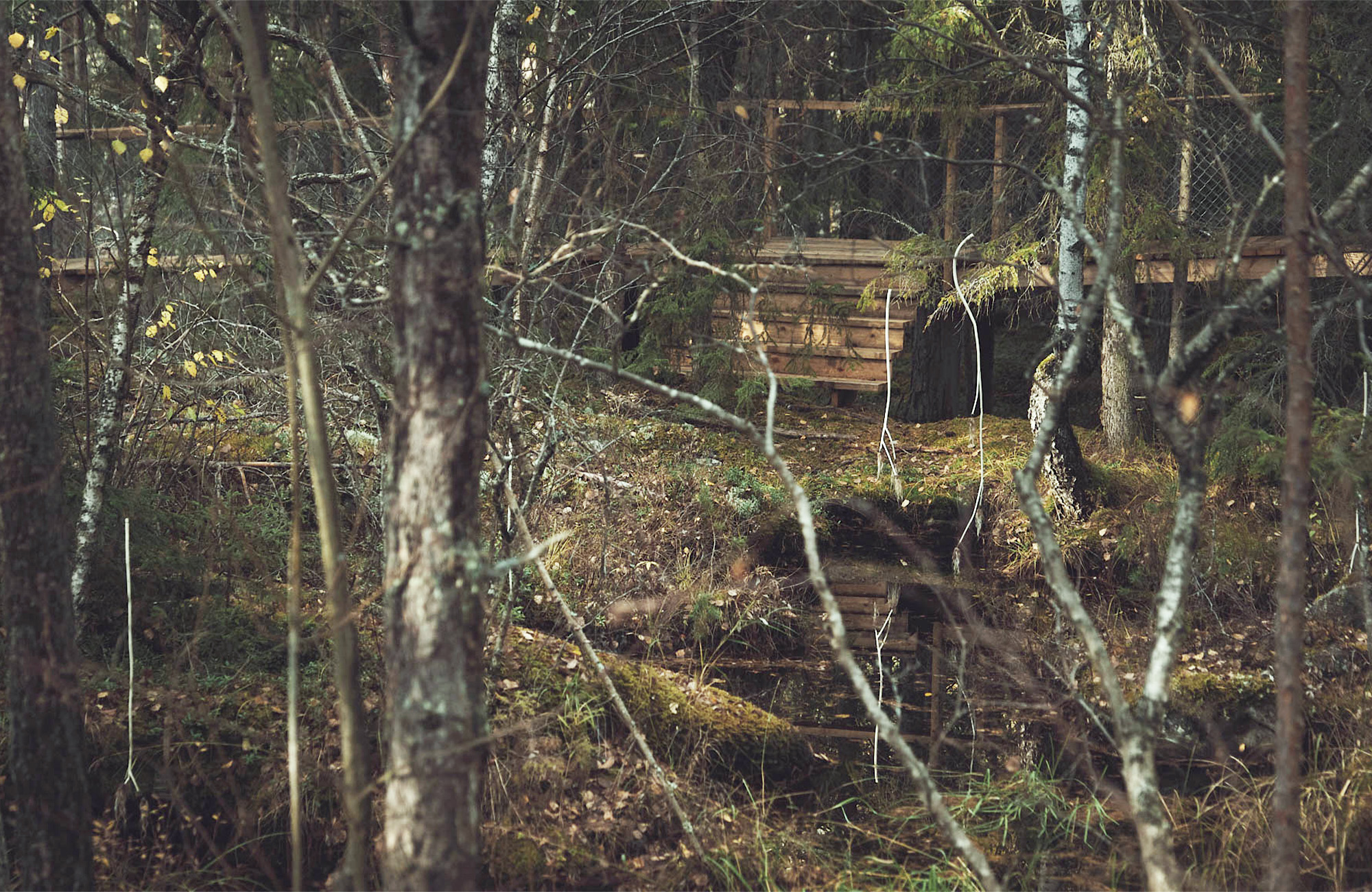About
Overview
Okulus is a landscape installation located in a secluded forest, at Harpefoss in Gudbrandsdalen valley in Norway. The location of the forest is framed by the Harpefoss-gorge on one side and main north-south railroad in Norway on the other side. The task for Rintala Eggertsson architects was to create a building that facilitated physical movement through the forest space, yet separated from it and a distinctive space for temporary art projects. As such the Okulus can be seen as a holistic a forest observatory.
The walkway as a typology is not a new invention. Archaeologists have found remains of walkways from 3807 BC and link it to travel over bog and wetland areas. The use has changed little since then, but today it is used in many more contexts varying from garden architecture to fashion shows. The common denominator is of course that one should lift the user up from a context and create a new and cleaner experience of the surroundings. Architecturally speaking, one can talk about an elevated situation in a physical and mental sense. One is freed from a more “primitive” state in nature and lifted to a “pure” human-made.
Nature was in earlier times often associated with something uncontrollable and demonic, while the human-made was linked to a divine order. That is not the case today. One can argue that natural science has brought us to a recognition that the pure is rather to be found in nature, while the human-made has given us chaos unparalleled in historical context.
The walkway is therefore just as much a subjective element as an objective tool, to see and experience nature. Subjective in the sense that it is up to everyone to take in the information we receive from nature through our senses, and objective in the sense that the walkway itself forms a common choice of direction and platform for the experience. “The eye of the beholder” is an apt expression for this duality and therefore we have chosen Okulus as the name of the installation.
The name oculus is Latin and means an eye. An ocular is the lens that makes up the magnifying glass in optical instruments such as microscopes and binoculars, and enlarges the image formed by the objective’s focal point. At the same time, oculus in classical architecture denotes a circular opening in a dome or wall, with the Pantheon in Rome as the most famous example.
The eye as a figure of thought is present in several layers in the project Okulus. Architecturally, it emphasizes how different positions and movements change the viewer’s perspective and interact with the art experience. The universally designed walkway gives an experience of a slow glide over the ground, and invites you to take in the surroundings with a light and attentive gaze.
Philosophically, this architecture can also show other types of spaces than the forest itself. Michel Foucault introduced the concept of heterotopias about places that are located on the outskirts of society’s productive and social order. Unlike utopias (non-places), heterotopias are concrete, but marginal places and buildings that are neither completely private nor completely public, neither open nor closed, neither completely regulated nor unregulated. In such places, boundaries can be experienced as temporarily porous, create space for what is different and turn upside down on common perceptions.
Okulus is also an eye in the forest. On overview maps of the area, the architecture is an island edge around a small pond, where the water mirror is the pupil that looks up from the ground to the sky above it.
Info
Design Team
Dagur Eggertsson, Vibeke Jenssen, Nick
Coates and Mads Øiern.
Client
Harpefoss Art Arena / Eivind Slettemeås
Contractor
Steinar Gran Svenningsen
Dagur Eggertsson, Vibeke Jenssen, Nick
Coates and Mads Øiern.
Client
Harpefoss Art Arena / Eivind Slettemeås
Contractor
Steinar Gran Svenningsen
Filed Under
